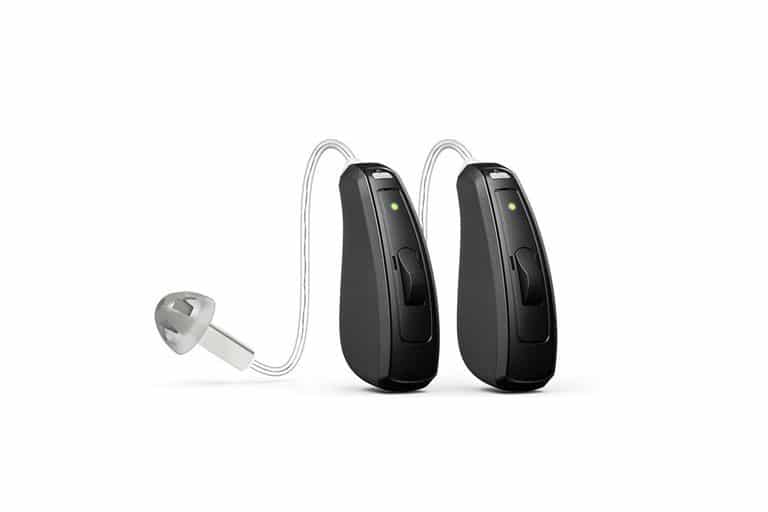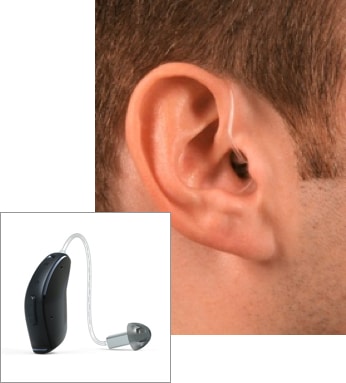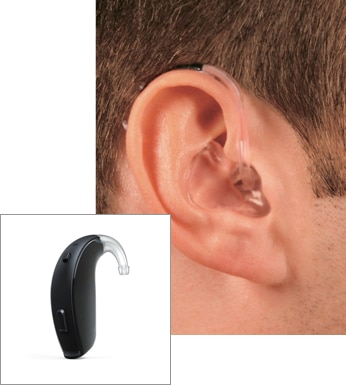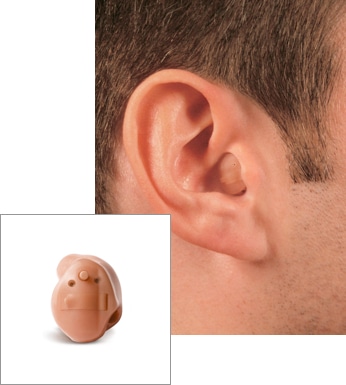
Considering Hearing Aids?
As you set out to select a hearing aid, you should consider both your hearing loss treatment needs and your personal preferences. The hearing aids you choose should meet your treatment needs in every area, including:
- Improved General Health
- Improved Professional Services
- Improved Emotional Well-Being
Patients who treat their hearing loss have also been shown to have higher quality of life and self-esteem than those who do not seek treatment.
A study of 2,000 patients with hearing loss found that up to a third of them saw improvements in their:
- Romance
- Sense of humor
- Mental health
- Emotional health
- Physical health
- Sense of safety
- Self-confidence
- Feelings about self
- Sense of independence
- Work relationships

Hearing Aid Options
Today’s hearing aids are smaller and more feature-packed than their predecessors, offering an array of options. Although it may seem overwhelming, your Audiologist will recommend the appropriate make and model to suit your hearing loss.
Hearing Aid Features
- Noise reduction and speech enhancement
- Bluetooth and wireless connectivity
- Wind noise reduction
- Directionality
- Feedback management
- Rechargeable batteries

Receiver-in-the-Canal (RIC)
An RIC hearing aid consists of a tiny housing containing all electronics except the receiver, which is positioned behind the ear. A thin tube connects the housing to the receiver, which is worn in the concha (bowl-shaped portion) of the ear.
It’s a small and discreet unit but powerful enough for treating mild to moderately severe hearing loss.

Behind-the-Ear (BTE)
The most popular style of hearing aid (about 60 percent of users choose this type), a BTE device is curved to match the contour of the ear and rests directly behind the ear. The housing, which contains all the electronics, is encased in plastic and connects to the ear canal with a thin, clear tube or ear mold.
Though more visible than other styles, the BTE is simple to use, making it a popular choice for children. It’s powerful enough for all types of hearing loss.

Completely-in-the-Canal (CIC)
This hearing aid is placed in the ear canal and is the smallest available. It takes advantage of the ear’s natural ability to collect sound, and its discreet size makes the device virtually invisible to others.
The trade-off is a shorter battery life, and it may prove difficult to adjust for those with poor manual dexterity. This is a good choice for mild to moderate hearing loss.

In-the-Canal (ITC)
This style is also designed to fit in the ear canal, but not as deeply as a CIC device, resting securely in the lower portion instead. It’s a little larger, making it easier to insert and remove and extending the battery life.
Best for patients with mild to moderate hearing loss.

In-the-Ear (ITE)
This hearing aid is designed to fill the outer portion of the ear, and is larger than those worn in the ear canals. It is less discreet, but the size allows for more features and makes the unit easier to adjust.
A bigger battery translates to longer life and means those with severe or profound hearing loss can benefit from this style.
